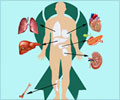An animal study has revealed that insulin-like growth factor impacts cell transplantation of photoreceptor precursors by manipulating the retinal recipient microenvironment.

At three weeks post-transplantation, the number of integrated, differentiated photoreceptor cells present in the growth factor-treated retinas was compared to the untreated controls.The researchers noted that all three growth factors are present during retinal development and all have been shown to affect photoreceptor differentiation. FGF2 has been shown to have varying effects based on the development stage of the cells to which it is applied. In addition, recent studies have shown that CNTF "acts transiently to suppress photoreceptor differentiation.""AAV mediated expression of IGF1 led to significantly increased levels of cell integration," wrote the researchers. "However, over expression of FGF2 had no significant effect on cell numbers and CNTF led to a significant decrease in cell integration."They concluded that it was possible to manipulate the environment of the recipient retina for photoreceptor cell transplantation using viral vectors, and that IGF1 provided a greater response."A potential consequence of IGF1 upregulation might be the improved or strengthened synaptic connectivity of the transplanted cells," said Dr. Pearson. "Newly born neurons, including photoreceptors, are vulnerable to pruning and apoptosis if appropriate synaptic connections with downstream targets are not formed and maintained."The researchers noted that IGF1 has also been associated with the upregulation of brain-derived neurotrophic factor (BDNF), an important modulator of synaptic plasticity in the adult brain after injury and along with exercise-induced cognitive function."This important study demonstrates that, by modifying the environment, growth factors impact cell transplantation survival," said Dr. John Sladek, professor of neurology and pediatrics at the University of Colorado School of Medicine. "While this study focused on the retina, growth factors also are believed to alter cell transplantation and survival in other brain regions which means that these findings should lead to more research on other serious neurological disorders."
Source-Eurekalert











